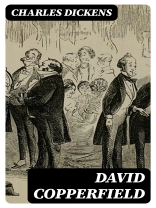Charles Dickens’ ‘David Copperfield’ is a classic novel that follows the journey of the titular character through various trials and tribulations from childhood to adulthood. Known for its vivid characters and intricate plotlines, the book is a prime example of Dickens’ social commentary on the 19th-century English society, touching upon themes of class struggle, poverty, and the struggle for personal identity. The novel is written in Dickens’ signature style of blending humor with dark realism, making it a compelling and thought-provoking read for literature enthusiasts. Set in Victorian England, ‘David Copperfield’ reflects the social conditions of the time and the challenges faced by individuals trying to navigate a rapidly changing world. With its richly detailed narrative and memorable characters, this novel continues to captivate readers worldwide with its timeless themes and timeless storytelling. Charles Dickens, a prominent Victorian author known for his insightful portrayals of social issues and intricate storytelling, draws inspiration from his own life experiences to craft the compelling narrative of ‘David Copperfield’. As a former child laborer and advocate for social reform, Dickens brings a sense of authenticity and empathy to the characters and themes in the novel. Recommended for those interested in exploring the complexities of human nature and society through the lens of classic literature, ‘David Copperfield’ is a must-read for fans of Dickens and 19th-century literature alike.
A propos de l’auteur
Charles Dickens (1812–1870) was an English writer and social critic whose novels remain extraordinary feats of storytelling and trenchant indictments of social injustices. Born in Portsmouth, Dickens’ childhood experiences, particularly his father’s imprisonment for debt, significantly influenced his writing. His literature often grapples with themes of poverty, inequality, and the plight of the downtrodden, imbued with a deep empathy for the common man. ‘David Copperfield’ (1850), one of his most personal works, is notable for its semi-autobiographical nature, with the eponymous protagonist reflecting aspects of Dickens’ own life journey from impoverished childhood to renowned authorship. Dickens’ literary style is marked by vivid characterizations, biting satire, and a narrative vigor that propels the reader through his expansive oeuvres. His other monumental works include ‘Oliver Twist’ (1838), ‘A Christmas Carol’ (1843), ‘Bleak House’ (1853), ‘Hard Times’ (1854), ‘A Tale of Two Cities’ (1859), and ‘Great Expectations’ (1861), all of which cemented his reputation as a preeminent figure in English literature. His profound impact on the literary world continues to be acknowledged by readers and scholars, resonating through subsequent generations and affirming him as a cornerstone of Victorian literature.












